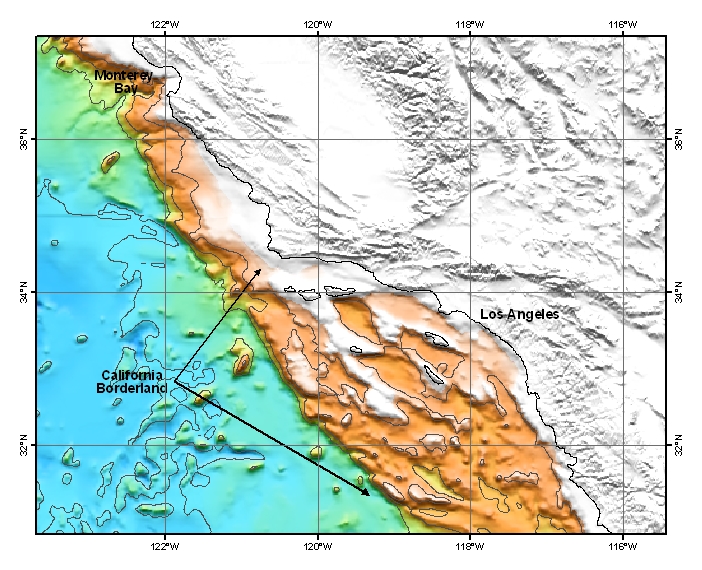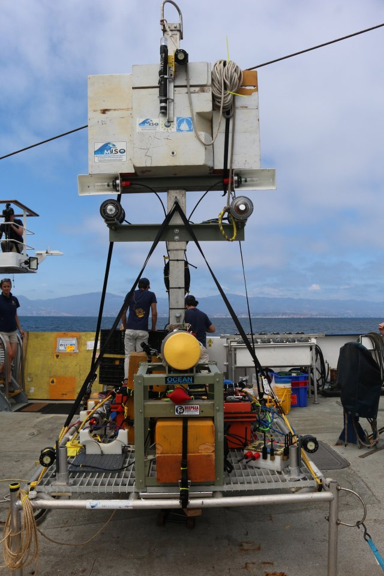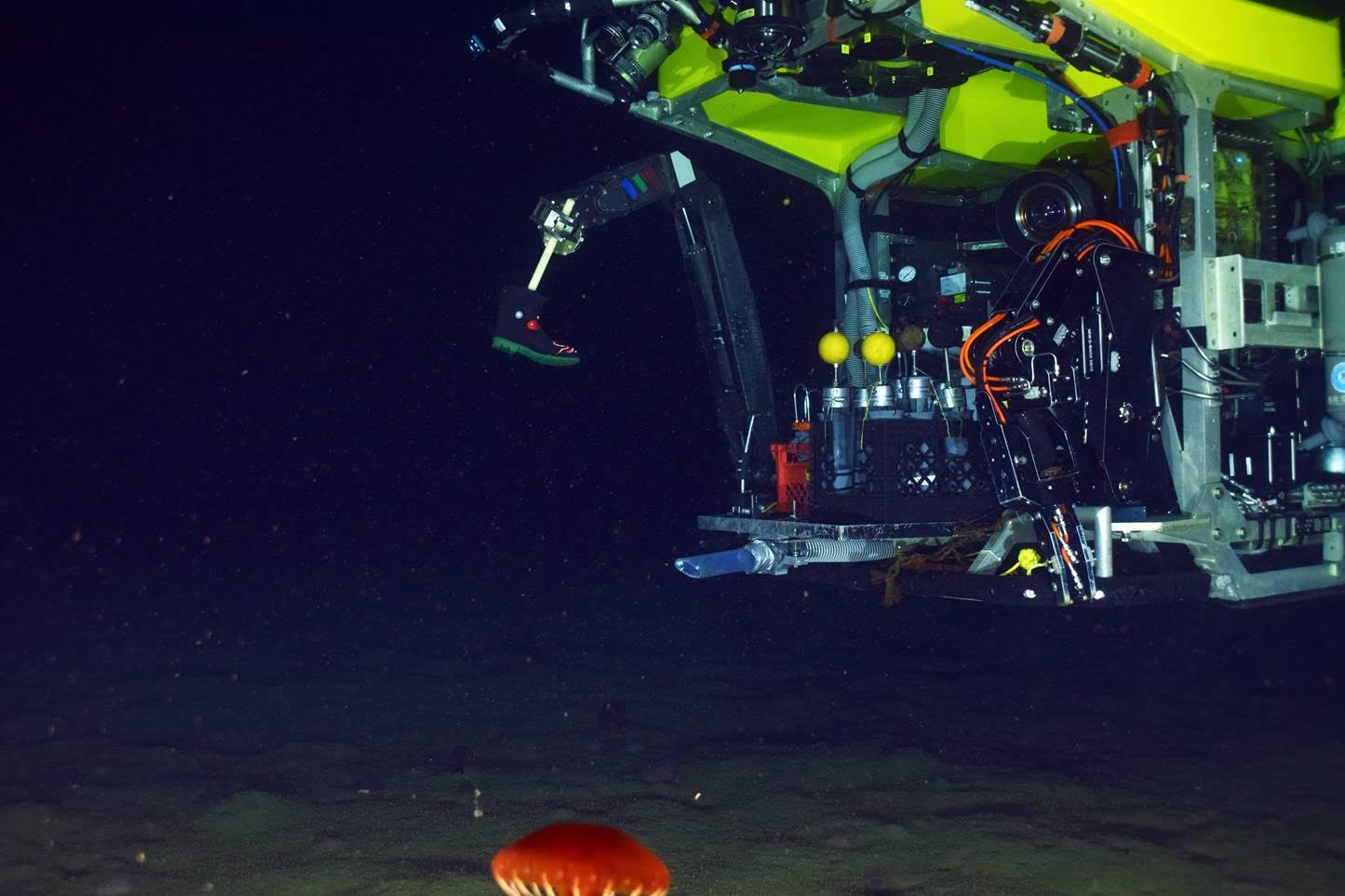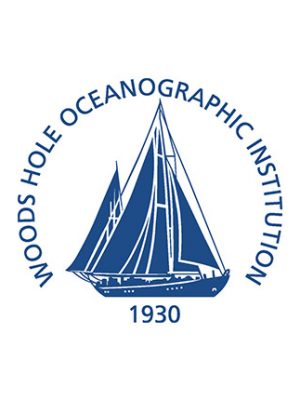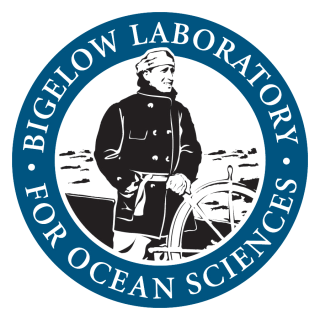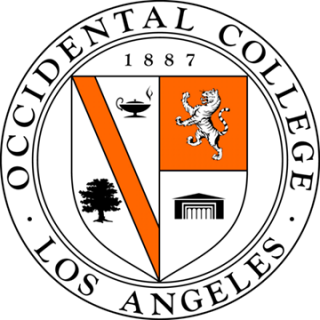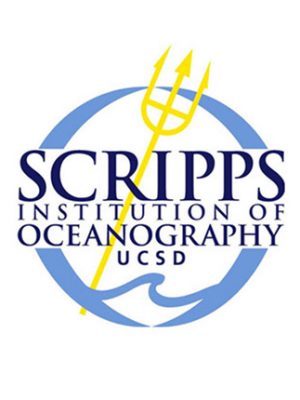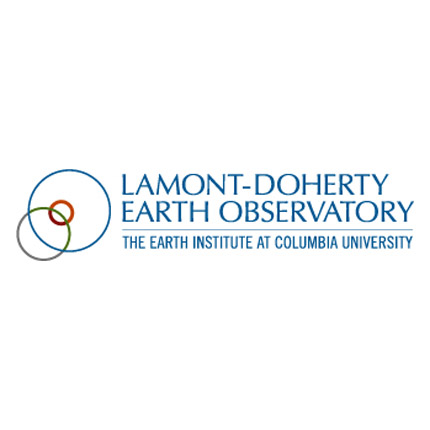Hydrothermal vent and hydrocarbon seeps have been an important subject of oceanographic research over the last 35 years. Nevertheless, there are still many long-standing questions about these dynamic ecosystems, including their distribution and abundance in our ocean. Notably, the habitats are so unique that they mimic what environments might be like on other planets; this is why research expeditions to vent systems are so critical to space exploration missions.
During this 17-day interdisciplinary expedition, the research team led by Dr. Peter Girguis of Harvard University will test new instruments that can work autonomously in these undersea environments, much like future NASA ocean exploration robots will do. To test these new technologies, the scientists will be deploying them in the Southern California Borderland, to characterize the geological, geochemical, and biological attributes of the vent and seep ecosystems. The goal of these characterizations is to determine if vents and seeps along the California coast are ecologically connected to vent sites both North (Washington) and South (Mexico) of California.
The Southern California Borderland: A Unique System with many unique habitats
The complex ocean floor of the Southern California Borderland is an area with varying geographic features and is constantly undergoing change. This offshore area between the continental slope and the coast of southern California is tectonically active, containing a series of basins and ridges, including the Channel Islands. Centuries of movement by the San Andreas Fault has shifted massive pieces of the Earth’s crust both horizontally and vertically, forming features in this area such as methane vents, oil fields, mud volcanoes, and gas hydrates. This system is so dynamic, filled with so many regions where gas can leak out of the seafloor, that it is home to microbes that hold the world record for the speed at which they eat methane.
A system like no other, this wide extending area boasts chemosynthetic habitats, whale skeletons, yellow microbial mats, and a methane seep the size of 14 football fields. As a unique and changing ecosystem, the science team will seek insight into how the biology is related at different sites within the system, and understand the path fauna took to get between these distant sites. There are many ideas about how the fauna may be correspondent to the unique chemical circumstances brought by geographic traits, and the scientists will be looking for evidence to support or refute their ideas. They will also look for evidence that these vents and seeps provide valuable ecosystem services such as habitat, food, breeding, and nursery grounds to species that may not actually live at these sites. This is especially applicable to commercially relevant fish like sole, flounder, rock fish and red snapper.
Landing in Ocean or Space
The expedition will use emerging technologies inspired by the needs of NASA and oceanographers to study these vent and seep systems. A wireless observatory called the ABISS (Autonomous Biogeochemical Sampling System) will be deployed to make observations at high temporal resolution. The lander will be used as a test bed for NASA technology to potentially study oceans on other worlds. This will be the first time ABISS will be deployed with a suite of geochemical sensors running on their own, with no direct input from scientists on board. The lander also includes an optical modem, and is the world’s only wireless broadband communication system for use under water. This will allow the scientists to communicate and exchange with the ABISS in real time, without interfering with the automated mission. The goal is to test the lander on this expedition, so once the core infrastructure is completed the design can be made publicly available for wide-spread “wireless” use.
While scientists have deployed a number of high-tech cabled observatories in our ocean, they are costly and cover a limited footprint. There is still a need to monitor protected sanctuaries and sensitive ecosystems beyond the reach of the cabled systems. The ABISS lander has been made with this in mind, being both modular and robust to permit deployment in a variety of settings. The sensors that were chosen for the ABISS are also reliable and cost effective so that variations of the lander can be used for monitoring of sanctuaries and other sensitive ecosystems. This open design project will encourage others to continue to work together to advance the technology.
Planning Methods of Discovery
To conduct the first thorough geophysical, geological, geochemical, and biological characterization of the vents and seeps, the team will map key target areas between Santa Barbara and San Pedro, CA, finding new sites and verifying known gas plumes. They will then use ROV SuBastian to sample the biology at the vents and seeps for molecular and phylogenetic identification, and diet analyses. An extra step will be taken on non-endemic fauna samples to determine the extent nutrition is being deriving from microbial (chemosynthesis-based) sources. Sediment, water, and rock samples will also be taken for geochemical and microbial analyses. The data collected will be used in collaboration with shoreside colleagues who look at how microbes and animals influence the chemistry of the environment.
Overall, this ambitious project has the potential to greatly improve our understanding of seeps, vents, and mid-ocean ridges, providing biogeochemists, geographers, and ecologists an outstanding opportunity to better understand the role these systems play in overall ocean processes.
Data & Publications
All voucher material of animals collected during the cruise is accessioned into the Scripps Institution of Oceanography – Benthic Invertebrate Collection.
The resulting shipboard dataset is being archived at Rolling Deck to Repository and is now available.
Processed Backscatter, Bathymetry, Sidescan, CTD, and ROV documentation and imagery is archived at MGDS.
ADCP data is curated and archived by University of Hawaii.
- Marlow, J., Hoer, D., Jungbluth, S., Reynard, L, Gartman, A., Chavez, M., et. al. (2021). Carbonate-hosted microbial commuities are prolific and pervasive methane oxidizeres at geologically diverse marine methane seep sites. Proceedings of the National Academy of Sciences, 118(25), doi: 10.1073/pnas.2006857118. [This article has been published as OPEN ACCESS].
- Alalykina, I. and Polyakova, N. (2022). New species of Ophryotrocha (Annelida: Dorvilleidae) Associated with Deep-sea Reducing Habitats in the Bering Sea, Northwest Pacific. Deep Sea Research Part II: Topical Studies in Oceanography, 206, doi: 10.1016/j.dsr2.2022.105217. (This publication describes a new species discovered on Falkor in 2018 and cites the respective DNA sequences).
- Rodriguez-Flores, P., Seid, C., Rouse, G., and Giribet, G. (2023). Cosmopolitan abyssal lineages? A systematic study of East Pacific deep-sea squat lobsters (Decapoda: Galatheoidea Munidopsidae). Invertebrate Systematics, 37 (1), doi: 10.1071/IS22030. [This article has been published as OPEN ACCESS].
- Mongiardino Koch, N., Tilic, E., Miller, A.K., Stiller, J., and Rouse, G. (2023). Confusion will be my epitaph: genome-scale discordance stifles phylogenetic resolution of Holothuroidea. Proceedings of the Royal Society, 290, doi: 10.1098/rspb.2023.0988. [This article has been published as OPEN ACCESS].
In the News
La misión del dron submarino conecta a la Politécnica con la NASA y Harvard
La Verdad • September 24th, 2018
A Whale’s Afterlife
The New Yorker • February 18th, 2019
